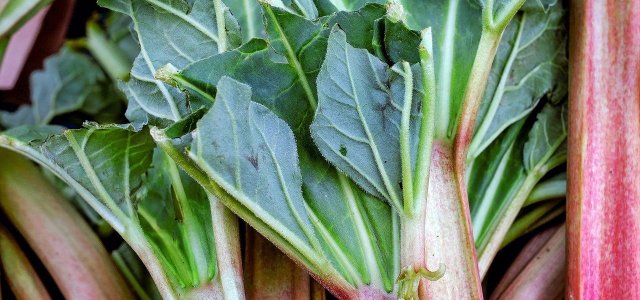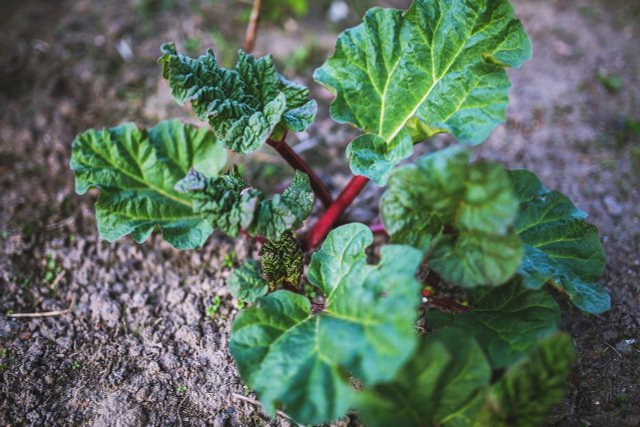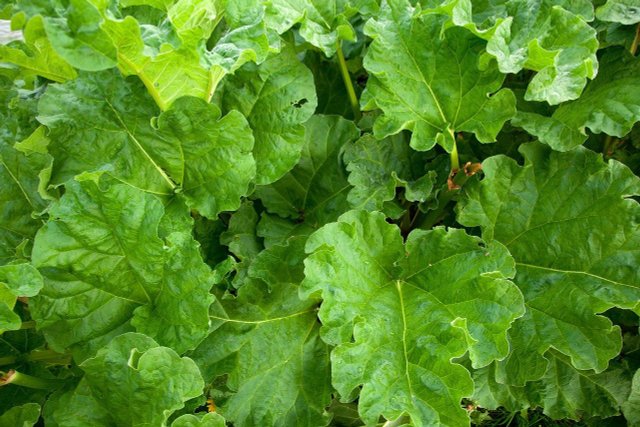
Do you have rhubarb leaves left over? You shouldn’t eat them, but you don’t have to throw them away either. We’ll show you how to put rhubarb leaves to good use.
Rhubarb is a sweet and sour vegetable that is in season in spring. You can use it in numerous recipes such as rhubarb pie, rhubarb chutney or rhubarb liqueur. Before eating it, you should clean it from its leaves and peel. The reason for this is the high amount of oxalic acid contained in these parts of the plant. The toxin can be harmful to the kidneys in high concentrations. Nevertheless, the supposedly useless rhubarb leaves can still become useful to you in the garden.
For this you can use rhubarb leaves

Rhubarb leaves are not suitable for consumption, but a decoction of the leaves can give your plants additional strength. So you can use rhubarb leaves as a natural fertilizer or as a safe spray that is also suitable for your organic garden.
- Strengthen your plants: Use rhubarb leaf decoction to help your plants grow and make them more resilient. Especially in spring, your plants will be happy to have a growth aid. In the fall, strengthen your plants for the winter.
- Prevent potassium deficiency: Rhubarb leaves contain a lot of potassium. Potassium deficiency makes plants more susceptible to diseases.
- Use the remedy in case of diseases: If your plants are already sick, rhubarb leaves will also help. In case of blight or late blight, remove the affected parts of the plant and spray the plant with high-concentrate decoction. Rhubarb leaves are also a helpful remedy against aphids.
Rhubarb leaves decoction: how to make it

To make a decoction of rhubarb leaves, you will need a pot, a strainer and a tea towel. A watering can or a bottle with a spray attachment is useful for the application.
- Crush the leaves by shredding them with your hands or chopping them with a knife.
- Pour water into a pot. For highly concentrated decoction – for example, against disease infestation – the quantity ratio of water and rhubarb leaves should be 1:1. That is, for 500 grams of rhubarb leaves you need 500 milliliters of water. If you want to use the rhubarb leaf decoction as a fertilizer, a higher proportion of water (for example, five parts of water to one part of leaves) is sufficient.
- Add the chopped rhubarb leaves to the pot and bring everything to a boil together briefly.
- Turn off the heat and let the rhubarb leaves steep for 30 minutes.
- Pour the broth through a sieve, catching the water. Squeeze the rhubarb leaves with your hands or with the help of a tea towel.
- Dispose of the leaves in the organic waste or compost.
Another method is to put the leaves in a container with warm or hot water. Close the jar ann and let the decoction infuse for 24 hours.
Note: The rhubarb leaf decoction will keep in the refrigerator for a few days. It is best to use it up promptly, before it begins to ferment.
Application:
As a fertilizer or as a preventative against disease: Water your plants with the decoction during their growing season. Harvest time for rhubarb is in spring/early summer. Timing-wise, this fits well with the fertilizing times of many other plants.
To combat disease, spray the affected plant with the decoction once a day for about three days in a row.

